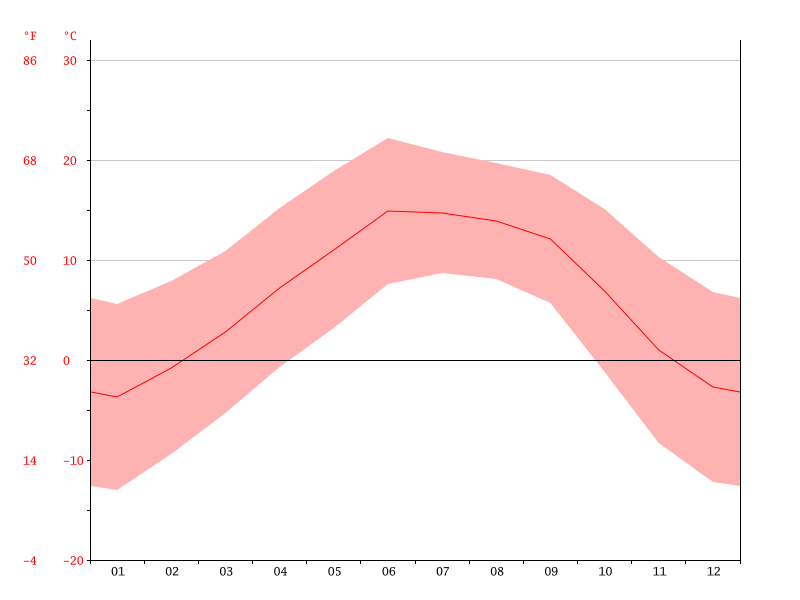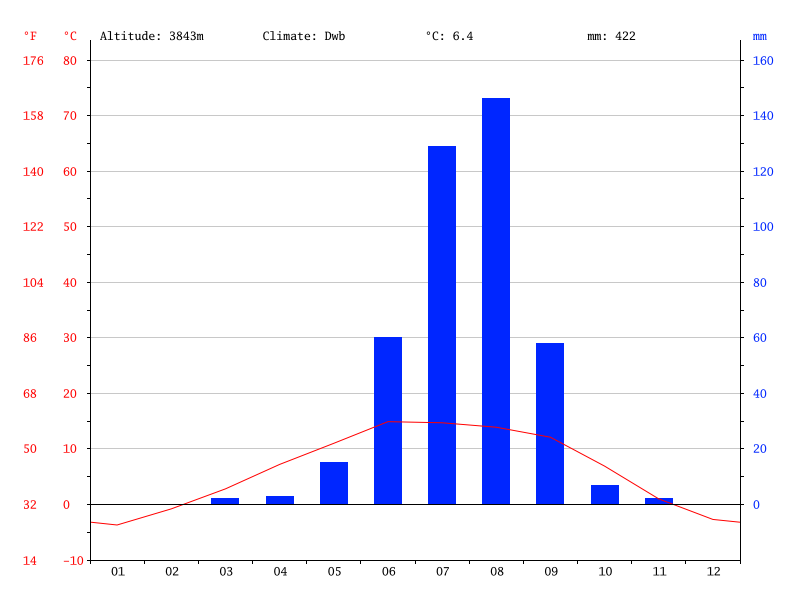
Shigatse Climate
The information on Shigatse climate could be helpful for preparing a Tibet travel. Situated in the southwest Qinghai Tibet Plateau and Tibet Autonomous Region, Shigatse has an average high elevation of 4,000 meters. Yarlung Zangbo River and Nianqu River rejoin in Shigatse, and creates vast river valleys and fertile plains, giving Shigatse a warm and sunny climate. It features thin air, strong ultraviolet, low air pressure, less oxygen than flat areas.
Shigatse Weather Graphs and Climate Features
Shigatse has roughly three regional climates. The area north of the Himalayas and south of the Gangdise-Nyenchen Tanglha Mountains belongs to the semi-arid monsoon climate of plateau temperate zone. A small area north of Gangdise-Nyenchen Tanglha Mountains belongs to plateau sub-frigid semi-arid and arid monsoon climate; The south area of the main ridge line of Himalayas is plateau temperate monsoon sub-humid climate.
Temperature
The climate of Shigatse is characterized by thin air, low pressure and little oxygen. With strong solar radiation and long sunshine duration, the average annual sunshine time in Shigatse reaches 3,300 hours, and the ultraviolet is strong. The temperature in Shigatse is low, the annual average temperature in western sub-frigid area is 0℃, eastern temperate area of 6.5℃, and the annual average temperature is of 6.3℃. It can be regarded as there is no severe cold in winter and no intense heat in summer. The average temperature of the coldest month is 2-12℃, the warmest month is 10-18℃, and the annual average diurnal range in the northwest is 16℃, the east of 14℃.
Precipitation
The weather of Shigatse has distinctive wet and dry seasons, with the rainy season running from May to September, and the dry season from October to April. July and August are the two rainest months in Shigatse, but most of the rainfall is concentrated at night and in the late evening.
Every year from October to April of the next year, Shigatse is dry and windy with low temperature and little rain. The precipitation is less than 10% of the annual precipitation, which is called dry season or wind season. From May to September, the climate is mild, the air is moist, and the precipitation accounts for more than 90% of the annual precipitation. And the precipitation is concentrated in July and August, which is called rainy season. The spatial distribution of precipitation is uneven, with more in the east, 200-430 mm, and less in the northwest, less than 200 mm. The east precipitation is earlier than the west. Frost-free period in Shigatse is more than 120 days. Within the territory, snowfall intensity is small, snow area is mainly concentrated in Yadong, Nyalam and Tingri. Some areas in the southern slopes of the Himalayas are warm all year round with abundant rainfall. The annual rainfall there is about 1000 mm. The average daily temperature in warmest day is 18-22℃.
Shigatse Weather and Climate by Month
Four Seasons in Shigatse
- Spring(March-May): From March to May, spring comes to Shigatse, temperature begins to rise and the likelihood of rain increased slightly. However, the average monthly rainfall is only 4-5 mm, and rarely during the day. The temperature rises slightly, but it is still cold at night, as low as -5℃. The daytime is warmer, the spring is sunny, and the daytime temperature is 5-10℃ on average.
- Summer(June-August): June and July are two wetter months as the dry season draws to an end and the rainy season begins. Temperature actually peaks in July, with average daytime temperature around 23-24℃. However, night temperature is 6-9℃, the temperature difference between day and night is still relatively large. Like most part of Tibet, most of the rain falls at night because the Himalayas block Indian monsoon. August is the wettest month of the year, with an average monthly rainfall of about 146 mm. The more likely it is to rain during the day, the wetter and more muddy the roads and tracks will become, which may affect traffic in some remote areas of Shigatse. Temperature begins to drop slightly in August, with a daily average of around 15℃.
- Autumn(September-November): From September to November, rainfall decreases and temperature drops steadily. Temperatures range from about 12℃ in September to 2-3℃ in November, and as temperatures fall, the night begins to get colder.
- Winter(December-Next February): December is the beginning of winter, and temperature has really fallen low, with the average daytime temperature ranging from 0℃ to -3℃. The night is even colder, and the temperature is as low as -10℃. But there is no rain, and the weather is dry and sunny. The year begins in the dry season, and January and February are the driest months of the year, without rain. The average temperature is about 0 to 3℃ during the day and-10 to -12℃ at night.
What to Pack for Shigatse Travel
- Due to the high altitude, the climate in Shigatse is relatively harsh. Shigatse is often dry because of long sunshine duration. With strong solar radiation in Shigatse, you are supposed to bring sunscreen, sunglasses and lipstick to protect yourself from ultraviolet hurt. Therefore, sunscream, sunglass(if it can prevent snow blindness, the effect will be better) and lipstick are very necessary.
- The temperature difference between day and night is large. In the daytime, high temperatures can lead to heat stroke, especially at noon, and low temperatures at night may cause people to catch colds. Therefore, warm and windproof clothes is recommended. You can also bring a sleeping bag just in case.
- Bring multiple layers of long-sleeved, warm clothes to cope with the changing weather. The temperature at night is much lower than that during the day. If you travel in spring and autumn, you need a warm jacket or down jacket, because it gets colder outside in the evening. Winter is the coldest time, you should bring gloves, hats, sunglasses and sunscreen to ensure that the cold does not affect you, and the sun does not burn your skin.
- You should also have a pair of strong boots or shoes, such as hiking shoes, even if you are not hiking in Tibet, because many of the areas where you are roaming are full of rugged rocks.
- You'd better consider the local climate and geographical location before going to Shigatse, and medicines for altitude sickness and cold should included in any travel kit.
Best Time to Visit
Temperatures in Shigatse range is from a high of 23℃ to a low of -25℃, with an annual average temperature of 6.3℃. From November to April in the next year, it is unsuitable for travelling to Shigatse because of the low temperature. July and August are considered as the rainy season. During this time, it often rains in the evening. The best time to visit Shigatse is April to October. If you're going to visit Mount Everest in Shigatse, April to June and September to October are the best time.
Do remember from October 1st to October 7th is the one-week long national holiday, coupled with Shigatse is one of the major destinations for domestic and international tourists travelling to Tibet, it could be extremely crowded.
Keep Reading
















